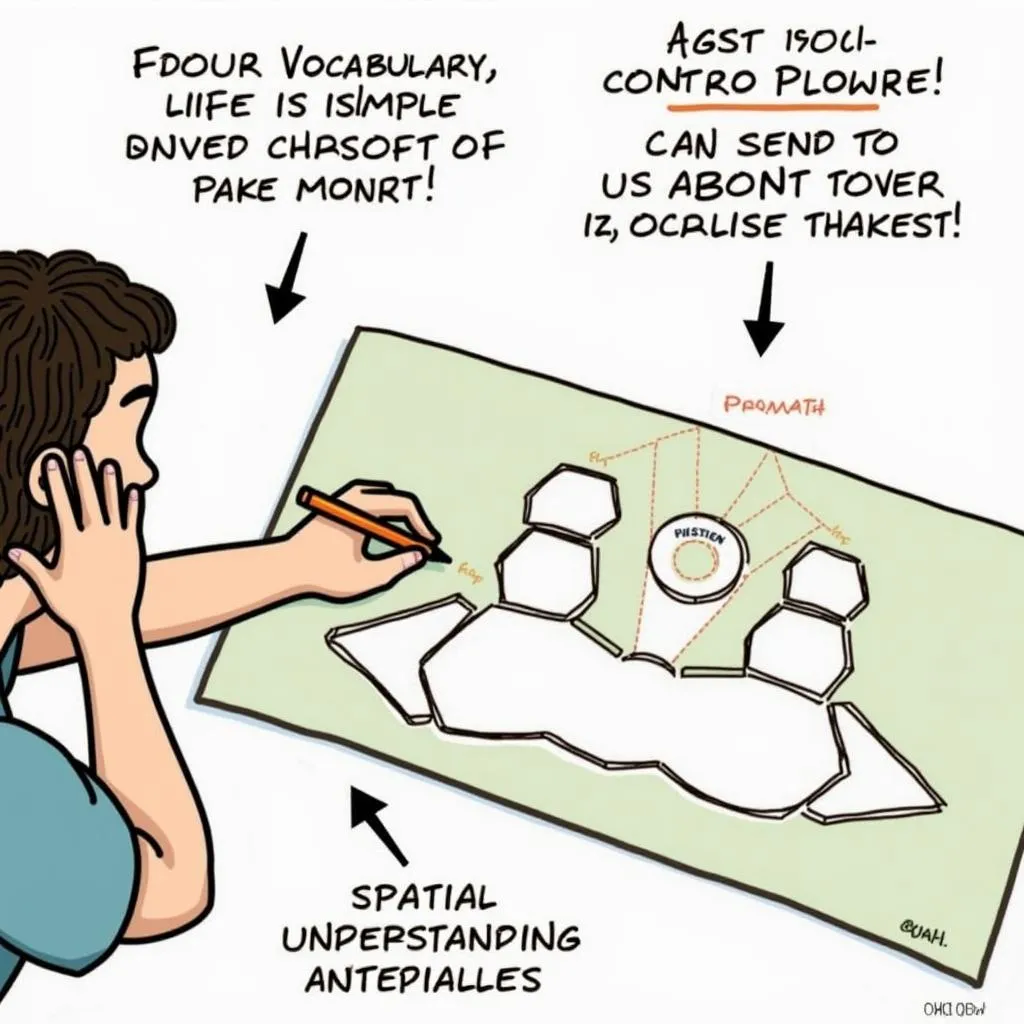Understanding Diagram Labeling in IELTS Listening
Diagram labeling is a common task in the IELTS Listening test, requiring candidates to accurately identify and label specific parts of an image based on the audio information provided. This skill tests your ability to comprehend spoken descriptions and match them to visual representations, a crucial aspect of academic and professional communication.
Why Diagram Labeling is Important
Mastering diagram labeling is essential for several reasons:
- It assesses your ability to process and apply auditory information to visual contexts.
- It tests your vocabulary and understanding of spatial relationships.
- It simulates real-life scenarios where you might need to follow instructions or understand complex descriptions.

Key Strategies for Diagram Labeling Success
To excel in diagram labeling tasks, consider the following tips:
1. Familiarize Yourself with Common Diagram Types
IELTS Listening may feature various diagram types, including:
- Floor plans
- Machine or equipment schematics
- Natural processes (e.g., water cycle, plant growth)
- Organizational charts
Expose yourself to a wide range of diagrams to improve your visual literacy and interpretation skills.
2. Preview the Diagram Before Listening
Take advantage of the time given before the audio begins to:
- Identify the diagram type
- Locate blank spaces or numbered labels
- Read any existing labels or information
- Predict potential vocabulary related to the diagram
This preparation will help you focus on relevant information during the listening task.
3. Listen for Descriptive Language and Spatial Indicators
Pay close attention to:
- Directional words (e.g., above, below, to the left/right)
- Sequence markers (e.g., first, next, finally)
- Specific measurements or quantities
- Technical terms related to the diagram’s subject
These linguistic cues will guide you to the correct labels and their positions.
4. Use the Diagram to Guide Your Listening
The diagram itself can help you anticipate the information you need:
- Follow the speaker’s description along the diagram
- Use existing labels as reference points
- Look for logical connections between parts of the diagram
This approach helps you stay focused and reduces the chances of missing crucial information.
5. Write as You Listen
Don’t wait until the end of the audio to fill in the labels:
- Write down answers as soon as you hear them
- Use shorthand or abbreviations if necessary
- Leave difficult answers blank and return to them later if time allows
This strategy prevents information overload and ensures you capture as many correct answers as possible.
6. Practice Active Listening
Develop your ability to extract key information:
- Focus on nouns, verbs, and adjectives that describe diagram elements
- Listen for emphasis or repetition, which often indicates important details
- Pay attention to clarifications or corrections the speaker might make
Active listening skills will improve your accuracy in identifying the correct labels.
7. Manage Your Time Effectively
Time management is crucial in the IELTS Listening test:
- Allocate your attention based on the number of labels required
- If you miss an answer, move on quickly to avoid missing subsequent information
- Use any remaining time to review and double-check your answers
Efficient time use maximizes your chances of completing all labels accurately.
Common Pitfalls to Avoid
Be aware of these common mistakes in diagram labeling tasks:
- Spelling errors: Even if you identify the correct label, misspelling it will result in a loss of marks.
- Ignoring word limits: Adhere strictly to the word limit specified in the instructions.
- Writing answers in the wrong order: Ensure your labels correspond to the correct numbers on the diagram.
- Getting distracted by irrelevant information: Focus only on details directly related to the labeling task.
Practice Exercises for Improvement
To enhance your diagram labeling skills, try these exercises:
- Label diagrams from written descriptions, then check your accuracy with audio versions.
- Create your own diagrams based on audio descriptions to improve your visual interpretation skills.
- Time yourself while completing practice tasks to build speed and efficiency.
- Review official IELTS practice materials to familiarize yourself with the types of diagrams and labeling tasks you might encounter.
Regular practice with a variety of diagram types will significantly improve your performance in this crucial aspect of the IELTS Listening test.
Next Steps
Now that you’re equipped with these strategies for IELTS Listening diagram labeling, it’s time to put them into practice:
- Gather a collection of IELTS practice materials focusing on diagram labeling tasks.
- Set aside dedicated time for focused practice sessions.
- Record your progress and identify areas for improvement.
- Seek feedback from a teacher or study group to refine your techniques.
Remember, mastering diagram labeling not only boosts your IELTS score but also enhances your overall listening comprehension skills, benefiting you in academic and professional settings beyond the test.
By consistently applying these tips and dedicating time to practice, you’ll be well-prepared to tackle any diagram labeling task in the IELTS Listening test with confidence and precision.